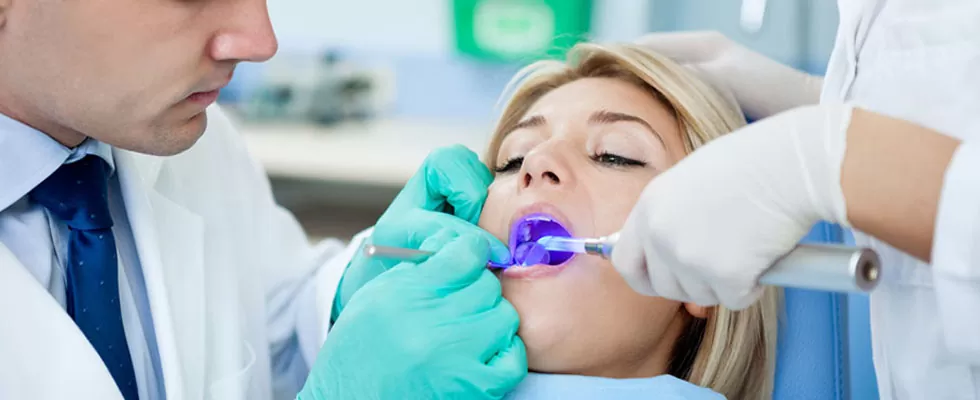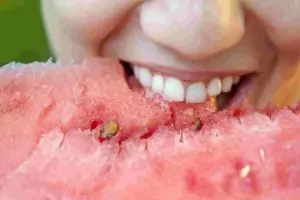Repairing damaged teeth and restoring them to their normal form is what this procedure does. Dental bonding helps teeth regain their structure and function. It is a boon to those who have chipped or cracked teeth. It helps restructure decayed or discoloured teeth and even useful when there is a gap between teeth. Using dental bonding it is possible to change the shape of the teeth and make them longer and attractive. In some cases it is used as an alternative to fillings.
Along with aesthetic function, the function and structure of the teeth are restored through this innovative procedure. To change the shape of the teeth, in this procedure a composite resin is applied. The best part of this treatment is that one need not plan many visits to the dentist. This procedure is completed in a single visit. This method is used for both adults and children. In the case of children, many dentists prefer this as the jaws/arches are still developing.
How is it done?
If due to accidents or trauma to the mouth region causes broken or chipped teeth, then dental bonding is the ideal treatment. Dental examinations are conducted by dentists and after considering the dental damage and the oral health of the person, this treatment is decided on. Before the actual treatment some preparation needs to be done.
Anaesthesia is not generally required, it is used when the bonding is done for decayed teeth. The resin material will be filled in the tooth and this procedure will cause pain and discomfort. Shaping the tooth is also needed in some cases. Other than these special cases anaesthesia is not used. Dentists will select the material which is similar in colour to the natural teeth. This will help to make sure that the bonded tooth does not stand out from the natural teeth.
After the resin is selected, the tooth is prepared. In this stage, the dentist will slightly be roughened, this is to make the tooth more accommodating. Next a conditioning material is applied to the tooth. This material helps in attaching the resin firmly to the teeth. Later the tooth coloured resin material is applied. Then it is then shaped and smoothed as required. Laser light is applied to the material to make it harden and stick to the tooth surface firmly. Once the material is hard, the it is then shaped and polished it to make it as similar to the natural teeth as possible. The procedure usually gets completed within an hour.
There are two main types of dental bonding. In adhesive bonding, an etchant is used for the restoration procedure. This is usually used by the dentist in the case of porcelain veneers, inlays and onlays. Direct composite bonding is the common bonding that is done in dental clinics. This involves applying the resin material to the teeth and reshape and restore them. If there is extensive damage to the tooth, then it will take some time to be fully restored.
Do you benefit from this procedure?
Dental bonding is one of the easiest and also cheapest procedures to restore teeth. It completes the restoration process within a small frame of time like other procedures like dental veneers. They also require multiple visits to the dentist, unlike the bonding procedure which is completed in a single consultation. Preparing the tooth for the procedure is one common method in both restorative procedures. But in the case of dental bonding, the amount of dental enamel that is removed is very less. One aspect that needs to be remembered is that bonding materials can chip off and are not fully resistant to stains. Besides this disadvantage, dentists prefer this method for minor cosmetic corrections to other types of methods.
Care for bonded teeth
Caring for teeth should also consist of brushing daily- twice a day and also flossing once a day. This will help to keep the mouth cavity clean from food debris and other particles that are stuck between teeth. Caring for teeth after dental bonding is easy. As there is a chance of bonding being chipped off, one must be careful when consuming hard chewy food. The edges of the teeth might get rough if one bites too hard on nuts or ice. If the edges feel rough, then getting it checked with the dentist can help to set right the issue. Avoiding food that causes stains like coffee, wine or fruits like berries will help the bonded teeth. They will not absorb the stain that is given out by these materials.
The life span of bonded teeth depends on the habits of the person. If healthy food habits are followed and care is taken when biting hard food products, then teeth do not get damaged. If proper care is not taken and habits such as smoking are not cut down, then stains are absorbed by the teeth and they will have to be replaced earlier than the usual lifetime of ten years.
One can think of dental bonding as not being a permanent bonding. After few years, due to wear and tear they can fade or be chipped but in no way do they cause damage to the dental enamel or oral health of the person. It is important that small chipped teeth are restored, as otherwise chewing function gets affected and so also the dental health of surrounding teeth.
Caring for teeth also means that one needs to go for dental check-ups at least twice a year. This will help you get a heads up on the possible dental concerns that can come up due to your lifestyle. Changing habits, lifestyles all will help to restore and maintain oral health. Visiting the dentist only at the time of a major dental problems can result in complex dental procedures. This can be avoided through regular check-ups.




